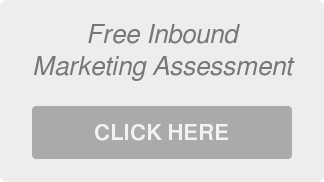 Generating leads is often cited as one of the biggest challenges for businesses today. With so much competition for attention online, creating content that not only engages your audience but also drives them to take action is no small feat. However, when done right, great content can become your most powerful tool for generating quality leads that convert into loyal customers.
Generating leads is often cited as one of the biggest challenges for businesses today. With so much competition for attention online, creating content that not only engages your audience but also drives them to take action is no small feat. However, when done right, great content can become your most powerful tool for generating quality leads that convert into loyal customers.
Know Your Audience Inside Out
Understanding your target audience is the first step to successful content marketing. After all, you can't create great content if you don't know who you're speaking to.
-
Create Detailed Buyer Personas: Start by developing buyer personas, fictional representations of your ideal customers. Include details like demographics, job roles, pain points, goals, and where they spend their time online.
-
Research Their Pain Points: Use surveys, social media listening, and tools like Google Trends to identify the challenges your audience faces. For example, if you're targeting small business owners, they may be looking for ways to streamline processes or save money.
Offer Value-Packed Lead Magnets
Lead magnets are free resources you offer in exchange for your audience's contact information, typically an email address. These magnets need to provide instant value and address a certain pain point for your audience. Examples of Effective Lead Magnets
-
eBooks And Guides: Deep dives into topics that solve problems or educate your audience (e.g., "10 Strategies to Boost Your Social Media ROI").
-
Templates And Checklists: Easy-to-use resources that simplify complex tasks (e.g., "Content Calendar Template").
-
Webinars: Live or recorded sessions featuring expert advice on trending topics.
-
Free Tools Or Trials: Allow users to experience your product or service firsthand, such as a free trial of your software.
Use clear CTAs like "Download Now" or "Get Your Free Checklist" to guide users.
Align Your Content With Each Stage Of The Buyer’s Journey
To generate leads effectively, your content should cater to potential customers at different stages of their buyer's journey.
-
Awareness Stage: At this stage, your audience is identifying a problem or opportunity. Focus on informative content like blog posts or explainer videos to grab their attention. For example, a blog titled "Why Your Website Isn't Converting Visitors" addresses a pain point without being overly promotional.
-
Consideration Stage: Here, your audience is actively seeking solutions. Create comparison guides, case studies, or expert interviews that help them evaluate their options. Examples might include "How to Choose the Best CRM for Your Small Business."
-
Decision Stage: At the decision stage, leads are ready to convert. This is where testimonials, free trials, and product demos shine. A CTA like "Sign Up for a Free Consultation" paired with a compelling testimonial can do wonders.
Optimize Content For Search Engines
SEO is a very important component of content marketing. Optimized content ensures your audience finds your website when they're searching for answers or solutions.
-
Perform Keyword Research: Identify the high-value keywords your target audience might be searching for. Use tools like SEMrush, Ubersuggest, or Google Keyword Planner to uncover these opportunities. For example, if you’re a marketing agency, keywords like "create a content strategy" or "lead generation tips" might be worth targeting.
-
Use Keywords Wisely: Sprinkle keywords naturally across your content, including in headlines, subheadings, and meta descriptions. But avoid keyword stuffing—your focus should be on providing value, not gaming the system.
-
Optimize For Voice Search: With the rise of virtual assistants, consider how your content can answer conversational queries like "What’s the best social media strategy for small businesses?"
Promote Your Content Effectively
Even the best content won’t generate leads if no one sees it. Strategic promotion ensures your content reaches the right audience.
-
Share On Social Media: Post your content across platforms where your audience spends time. Use eye-catching visuals and engaging captions to drive clicks.
-
Utilize Email Marketing: Leverage your current email list to share your latest blog posts, lead magnets, or webinars. Include personalized subject lines to boost open rates.
-
Invest In Paid Ads: Platforms like Facebook, LinkedIn, and Google allow you to target specific demographics with your content. Promote lead magnets or high-performing blog posts to widen your reach.
Analyze and Refine Your Strategy
Successful content marketing is an ongoing process. Regularly analyze your performance to identify what’s working—and what isn’t.
-
Track Key Metrics: Monitor metrics like website traffic, conversion rates, and bounce rates. Use this data to refine your strategy over time.
-
Experiment And Learn: A/B test different headlines, CTAs, or content formats. Small tweaks can lead to major improvements in lead generation.
Great content doesn’t just attract an audience—it converts them into valuable leads.





